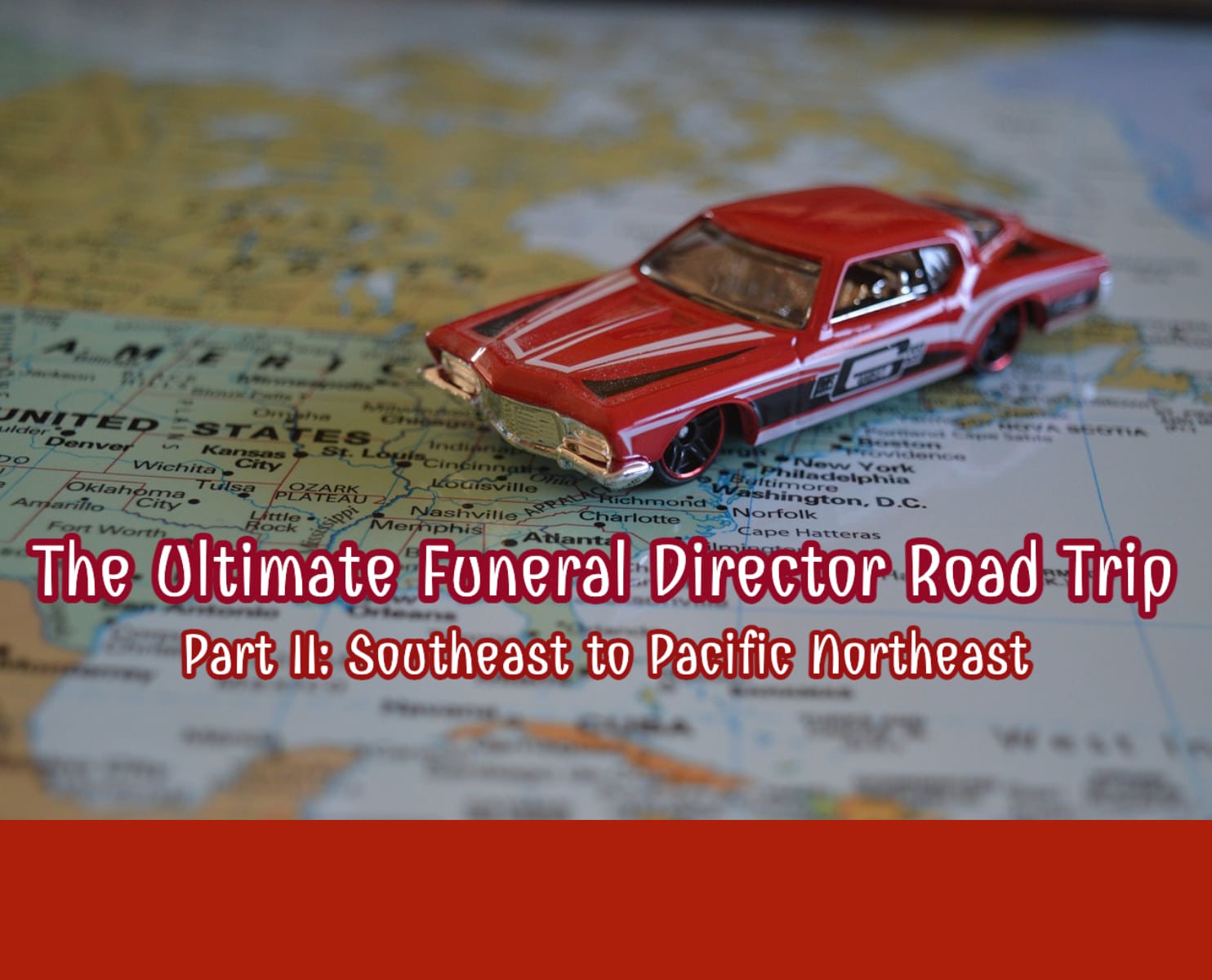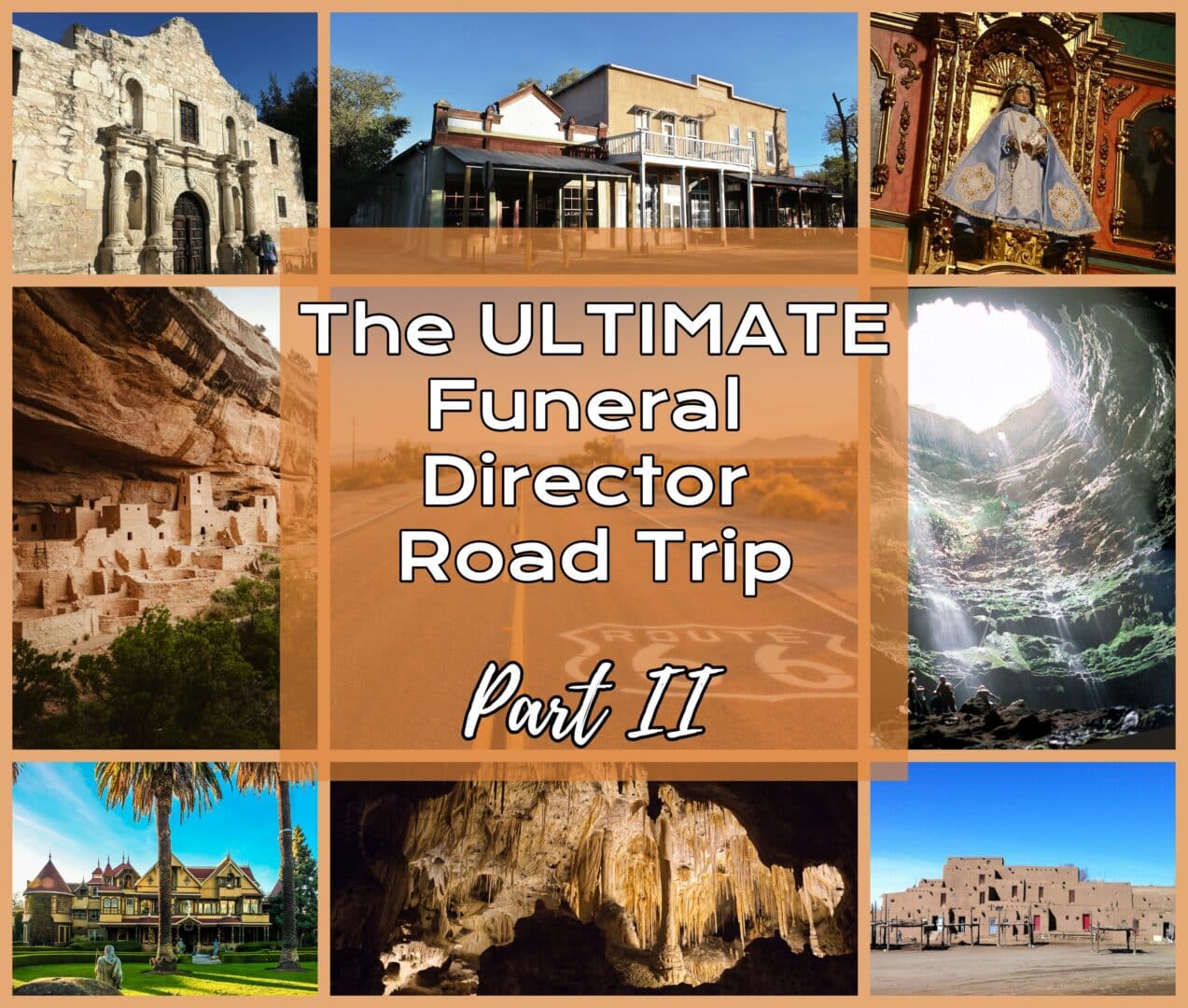
It has often been said that a person should take at least one great road trip during their lives to truly appreciate the vastness and diversity of the world around them. In a nation dotted with so many sites paying homage to the value of memorialization, a funeral director road trip offers a unique opportunity to delve into the rich history of funeral customs, traditions and cultural expressions of remembrance.
Recently, ASD published the first installment of a new road trip for funeral directors series on our blog. In our effort to curate an itinerary aimed at broadening the perspectives of individuals in the deathcare profession, we have dedicated considerable time researching destinations we believe will ignite inspiration among morticians. In Part 1 of the series, we explored over two dozen sites from the Northeast to the Southwest, including stunning cemeteries, moving veteran memorials, civil war history sites, notable graves, fascinating museums, and more.
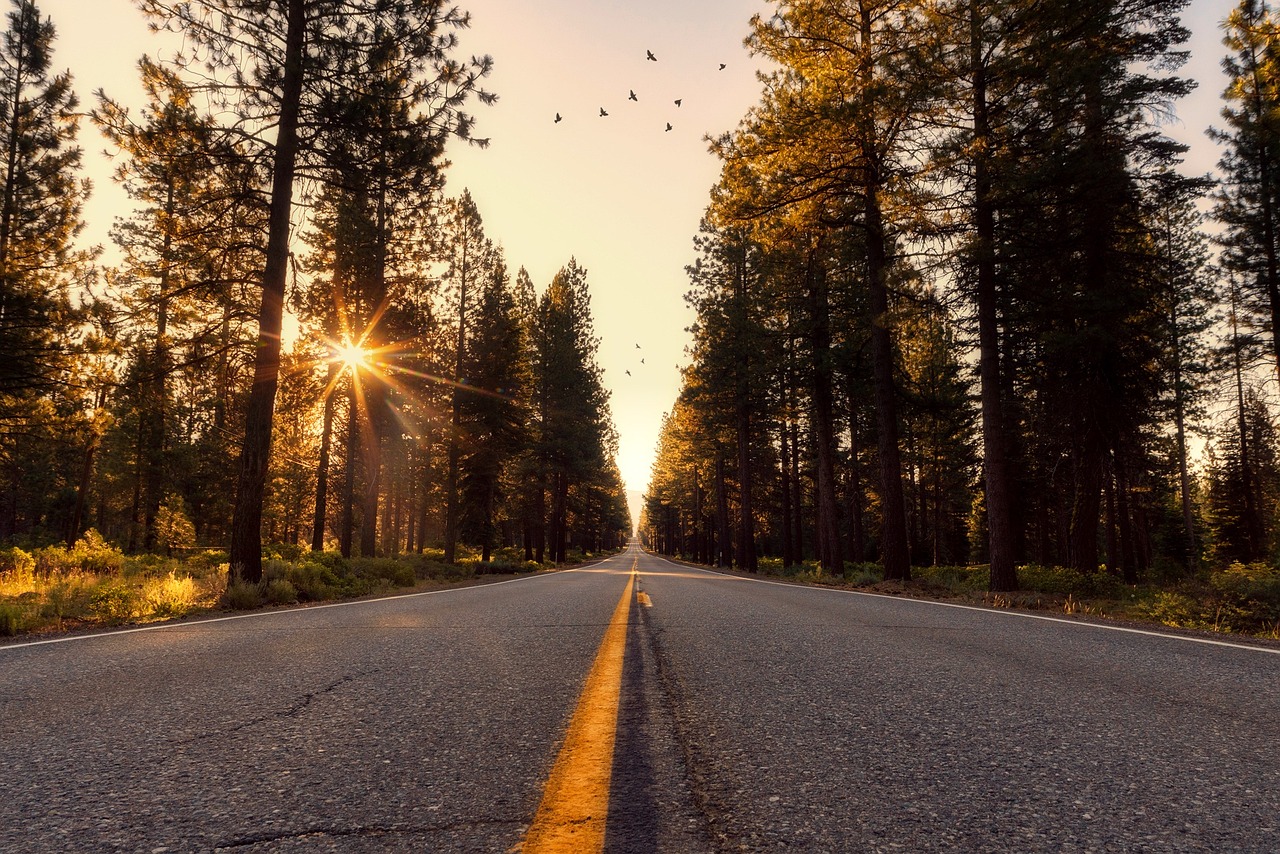
The Ultimate Road Trip For Funeral Directors
Part II: Southwest to West Coast
The second part of our road trip begins where Part 1 ended, in the great state of Texas. During this section of the trip, you’ll embark on a journey that will highlight places where the solemn beauty of mortality intertwines with the richness of history and culture. Traveling from the southwest to the Pacific northwest, you’ll drive through five states, exploring haunting ghost towns, ancient Native American ruins, stunning cemeteries, historic homes, natural wonders, unique museums and more. With approximately 52 hours of driving time, you can complete this leg of the road trip in about 9 days if driving 5-6 hours per day.
Be sure to explore the third part of our travel series where we will create an itinerary for the ultimate road trip for funeral directors from the west coast to the mid-west.
Texas
First stop: San Antonio, TX
San Antonio is home to a number of interesting historical sites sure to fascinate any funeral director with an appreciation for history. First and foremost, visit the Alamo (300 Alamo Plaza) to be inspired by the courage and sacrifice of those who defended it. While it may not be as off the beaten track as many of the other sites on this list, it is worth visiting to contemplate the significance of commemorating lives and events that have shaped our collective identity. After visiting the Alamo, stop by the stunning San Fernando Cathedral (115 Main Plaza) to visit the sarcophagus that holds the remains of the men who defended the Alamo, including Davy Crockett.
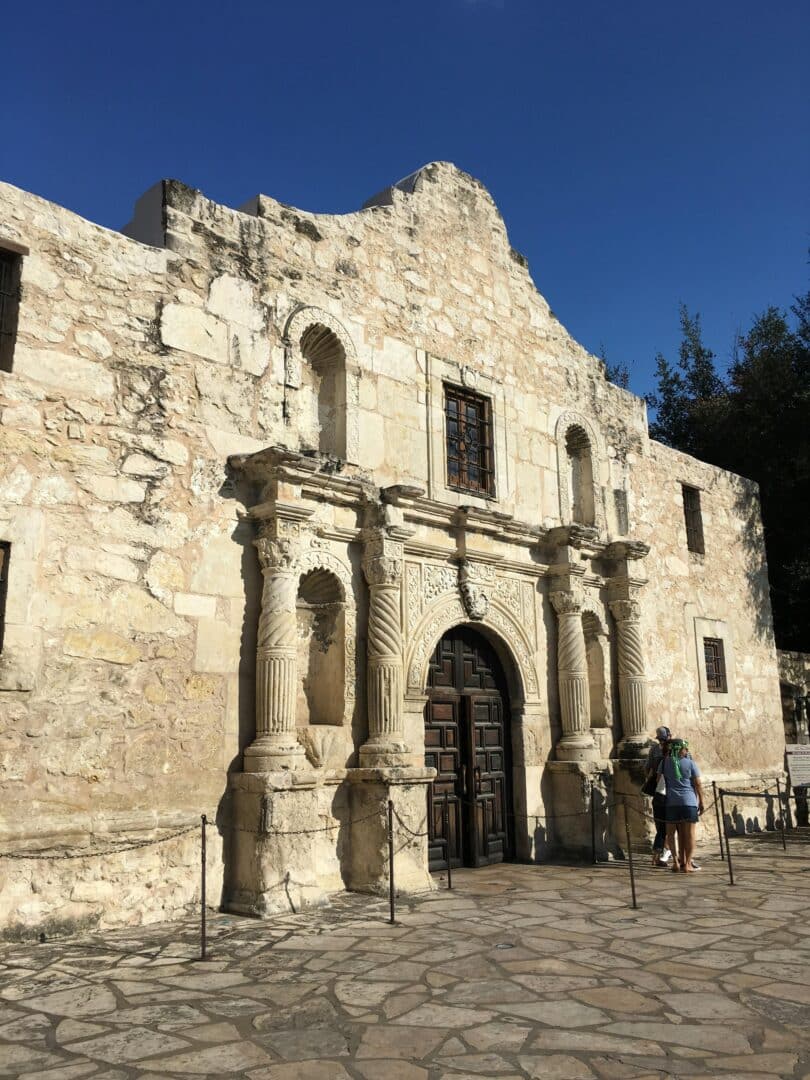
After paying your respects at the cathedral, head on over to the Institute of Texan Cultures (801 E César E. Chávez Blvd) to see the historic Castroville Hearse on display. Built around 1919, the antique, horse-drawn vehicle was once the only hearse used by the small town of Castroville, TX for more than a decade. After spending some time contemplating the history of funerals during that era, and checking out some of the institute’s other artifacts, keep the funeral history tour going at the San Antonio Museum of Art (200 W Jones Ave). Here you will find a collection of ancient marble Roman funerary urns on display. Dating back to the first century B.C., the intricate carvings will transport you back in time, evoking a sense of reverence for the lives and customs of those who have long since passed.
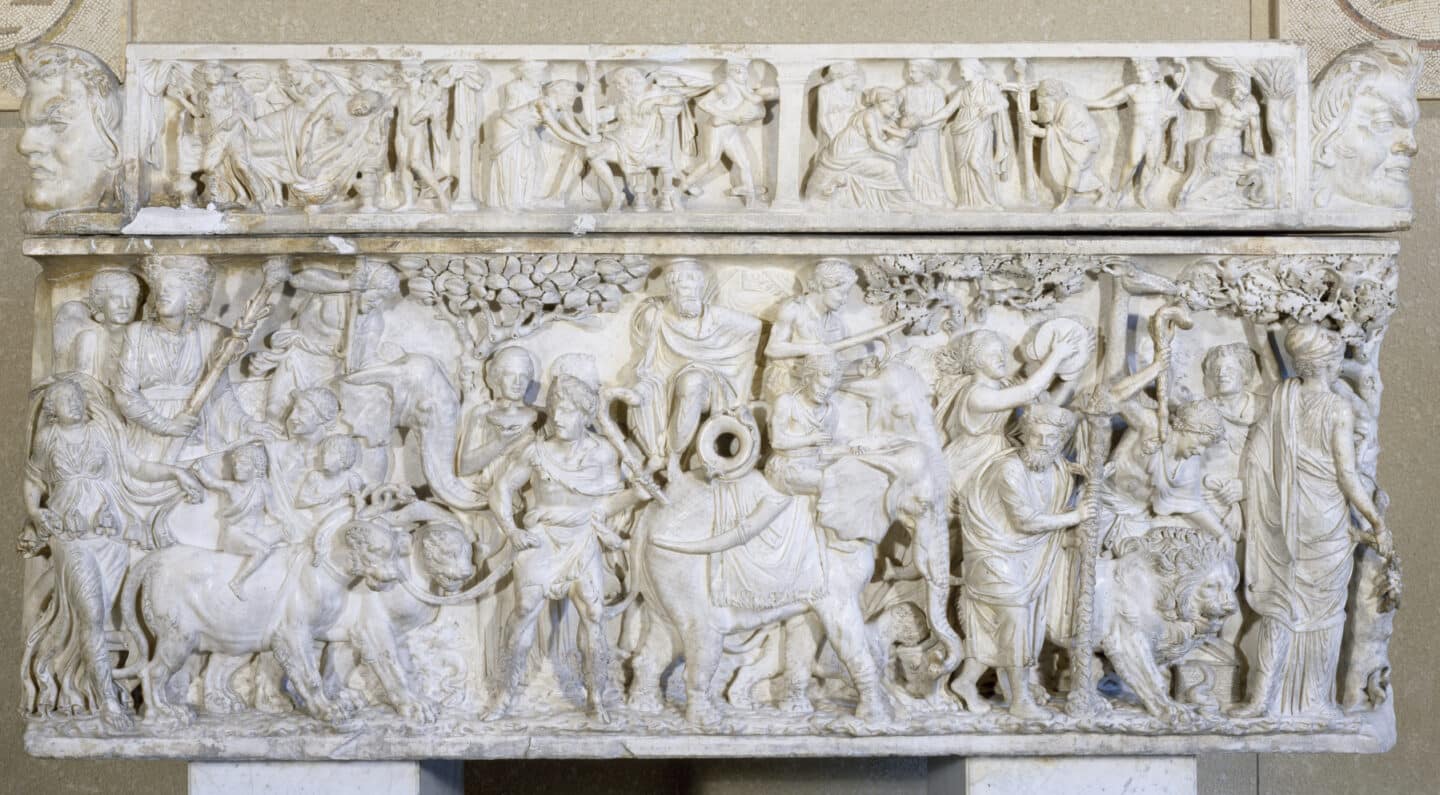
From San Antonio, head 45 minutes northwest to the town of Comfort, TX. Our road trip for funeral directors would not be complete without at least one distinctive burial site and the Comfort Cemetery (3rd Street, Comfort) is worth checking out to explore its uniquely beautiful seashell graves dating back to the late 1800s and early 1900s. While the origin of this tradition remains unclear, it is believed to have been influenced by the German heritage of the early settlers in the region.

Funeral directors are somewhat accustomed to staring into graves, but the next few stops on our list unveil a different kind of awe-inspiring hole. First, drive about an hour and 20 minutes from Comfort to Devil’s Sinkhole State Natural Area (300 North Sweeten St, Rocksprings) to peer into the cavernous, 400 feet deep sinkhole that is home to millions of bats. The largest single-chambered cavern in the state of Texas, the sinkhole is also believed to have been used by Native Americans as an ancient burial ground. From here, travel four hours northwest to explore the Odessa Meteor Crater (5599 Meteor Crater R), a geological site where a meteorite struck the earth millions of years ago. A visit to this natural wonder will evoke contemplation on the cycle of life and the forces of nature that shape our world.
New Mexico
From Odessa, travel northwest into New Mexico and stop at the Carlsbad Caverns National Park (3225 National Parks Hwy), the second largest cave chamber in the world. This otherworldly complex of caves and tunnels offering a profound metaphor for the journey through life and into the unknown, echoing the themes of transition and transformation that are inherent in the deathcare profession.
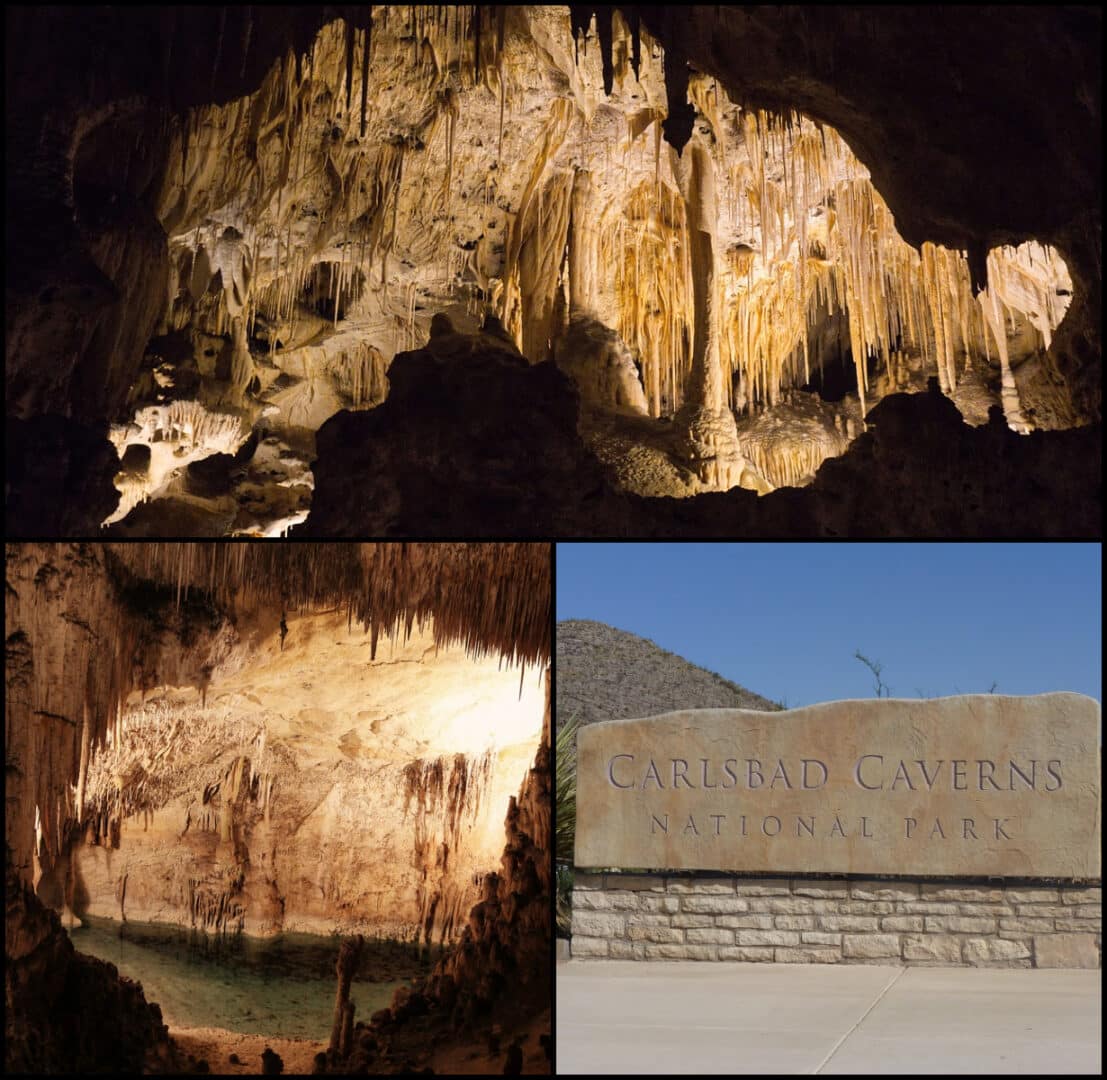
Next, skip all that alien tourist trap stuff in Roswell (unless you’re into that sorta thing – no judgement here!) and head a little further northwest to Lincoln, NM where you can immerse yourself in the history of the wild west. This historic town was the stomping grounds of the infamous Lincoln County War and figures like Billy the Kid. You’ll feel like you’ve stepped back in time to the 1880s when visiting The Lincoln Historic Site (Highway 380 Mm 97, 5, Lincoln, NM) which features over than a dozen preserved structures and outbuildings from 19th century.
Before heading to Santa Fe, make a pitstop in Capitan, NM (just 15 minutes west of Lincoln) to visit the final resting place of the real-life Smokey the Bear (102 Smokey Bear Blvd). Many people don’t know that the forest service icon is based on a real bear that New Mexico firefighters saved back in 1950. You can learn all about him and his legacy at the Smokey Bear Historical Park which is also the location of his gravesite.
Drive on towards Santa Fe and on the way to the city you’ll find Los Cerrillos, a sparsely populated town that offers a glimpse back in time to the gold rush era with many of the original buildings still preserved. From here, drive 26 miles to visit the La Cieneguilla Petroglphys site (674 Paseo Real), located right on the outskirts of the city. These ancient rock paintings depicting animals and hunters date back to the 13th-17th century and feature more than 4,000 images. They are easily accessible via a short hiking trail from the highway.
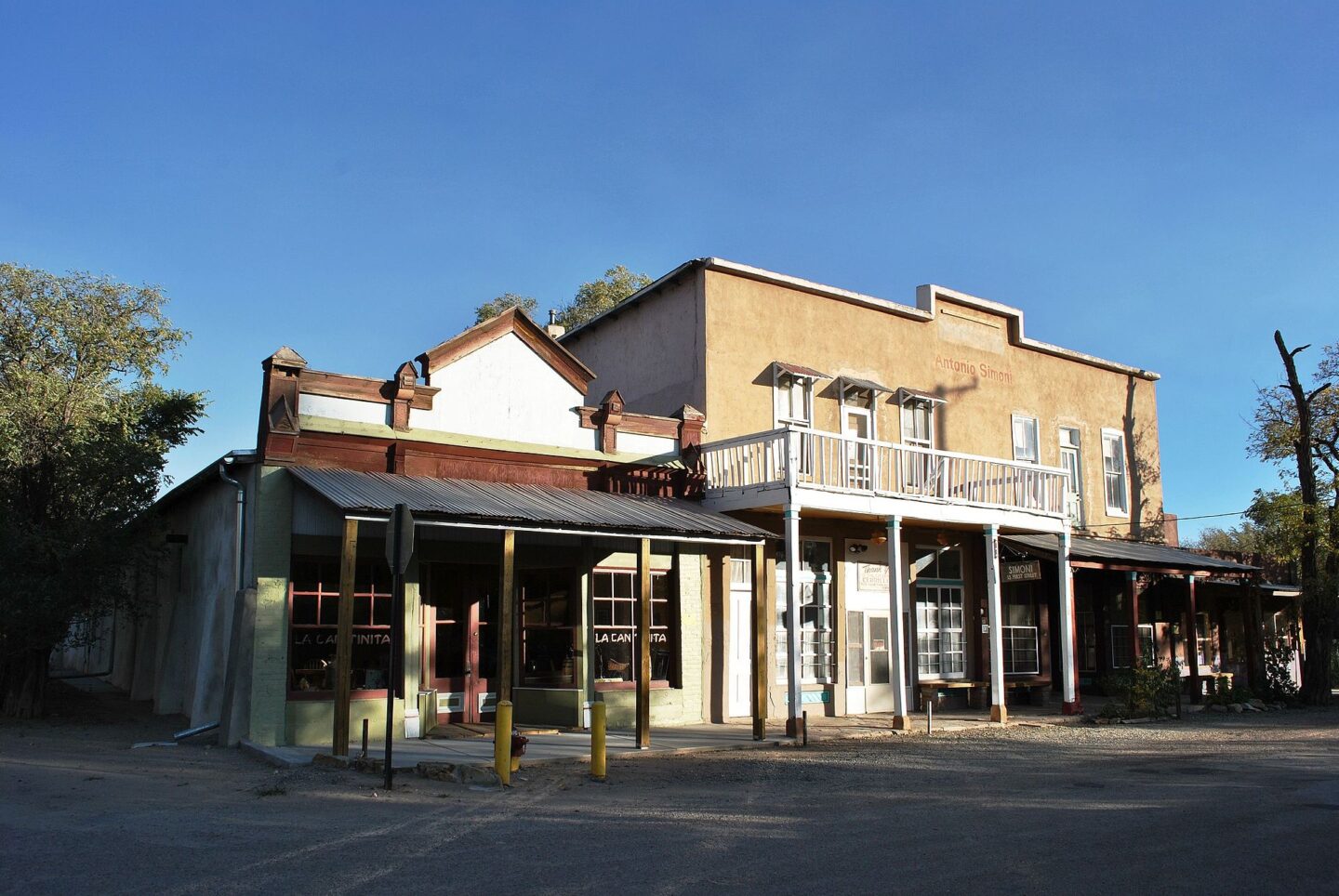
After being inspired by the past, take some time to appreciate modern artistic viewpoints at the House of Eternal Return (1352 Rufina Cir.), founded by Meow Wolfe Santa Fe. Featuring more than 70 rooms created by local and community artists, the immersive art center offers a multi-dimensional experience for visitors. With themes related to paranormal activity, dinosaur bones that make music when you tap them, secret passageways, and countless other details that will inspire your curiosity, the House of Eternal Return promises an unforgettable adventure, where every corner invites discovery.
The next leg of the journey delves into the rich history of Catholism. If you follow a different religion, feel free to bypass this optional detour. But for those of the Catholic faith, a visit to Santa Fe offers a unique opportunity to explore a cluster of fascinating and historically significant religious sites just a stone’s throw away from each other. First up, a visit to San Miguel Chapel (401 Old Santa Fe Trail), the oldest church building in the continental United States. Built by Franciscan friars to serve soldiers, laborers, and indigenous people in the region, the adobe church endured partial destruction during the Pueblo Revolt of 1680 and the present building dates from 1710. Next up, visit the Lady Chapel of the Cathedral Basilica of St. Francis (131 Cathedral Pl) to see a highly-revered wooden statue of the Virgin Mary. Called La Conquistadora, Our Lady of Conquering Love, she is believed by many to be the oldest Virgin Mary likeness in the United States. Finally, head to Loretta Chapel (207 Old Santa Fe Trail) to view the mysterious spiral stairs that some believe were miraculously constructed.
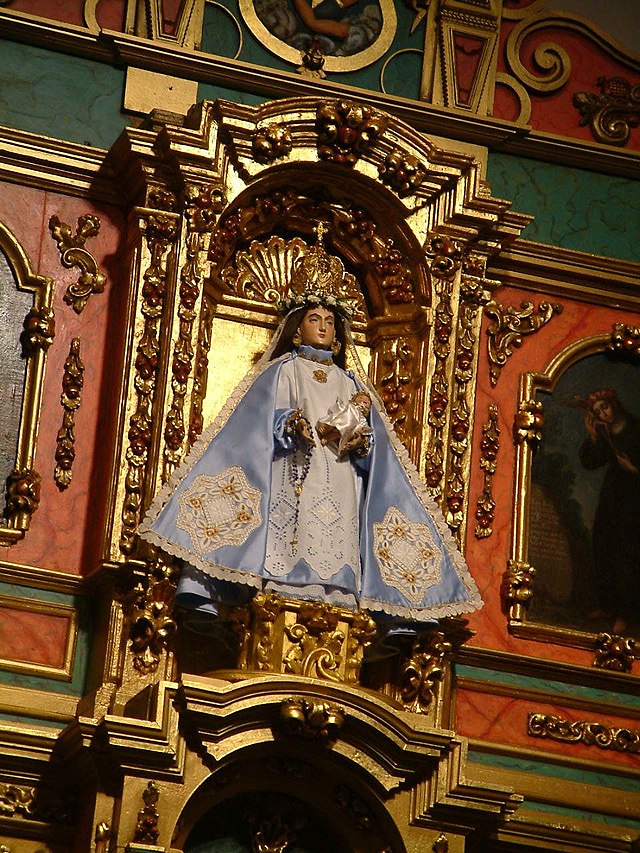
In New Mexico, countless ancient ruins and prehistoric sites pepper the landscape. As a funeral director, you frequently contemplate the significance of memorialization. The indigenous peoples’ perspectives on life and their beliefs concerning the afterlife offer profound insights. Their legacies provide invaluable lessons for us to glean. A visit to Taos Pueblo (120 Veterans Highway), the last New Mexico stop on your road trip, can provide you with a deeper understanding of Native American culture and history. Taos Pueblo stands as a testament to the enduring traditions of the Tiwa-speaking people, with its multi-storied adobe buildings dating back nearly a millennium. As you wander through the narrow, labyrinthine alleys of the pueblo, you’ll encounter a living community where ancient customs blend seamlessly with contemporary life.
Colorado and Arizona
Optional Detour: Crestone End of Life Project in Crestone, Colorado
The next stop on our journey will add about two hours of driving time to your road trip, but it is a worthy excursion for many who work in the deathcare profession. In Crestone, Colorado you can visit the nation’s only legal open-air cremation pyre. The Crestone End of Life Project is a nonprofit run by volunteers that has been holding open air cremations for over 15 years using local piñon line and juniper branches. If you plan to visit, be sure to contact the organization in advance to see if you can arrange to speak with one of the founders during your visit.
Next up, head to the southwest corner of Colorado to Mesa Verde National Park to explore the ancient cliff dwellings of the Ancestral Puebloans. Including more than 4,000 known archeological sites dating back to A.D. 550, this incredible landscape offers a poignant reminder of the impermanence of human existence and the enduring remnants of those who came before us. As a funeral director, seeing the intricate craftsmanship and architectural ingenuity of the cliff dwellings in person can offer profound sense of reverence for the rituals of remembrance. The preservation efforts at Mesa Verde also serve as a testament to the power of memory and the importance of honoring the legacies of those who have passed on.
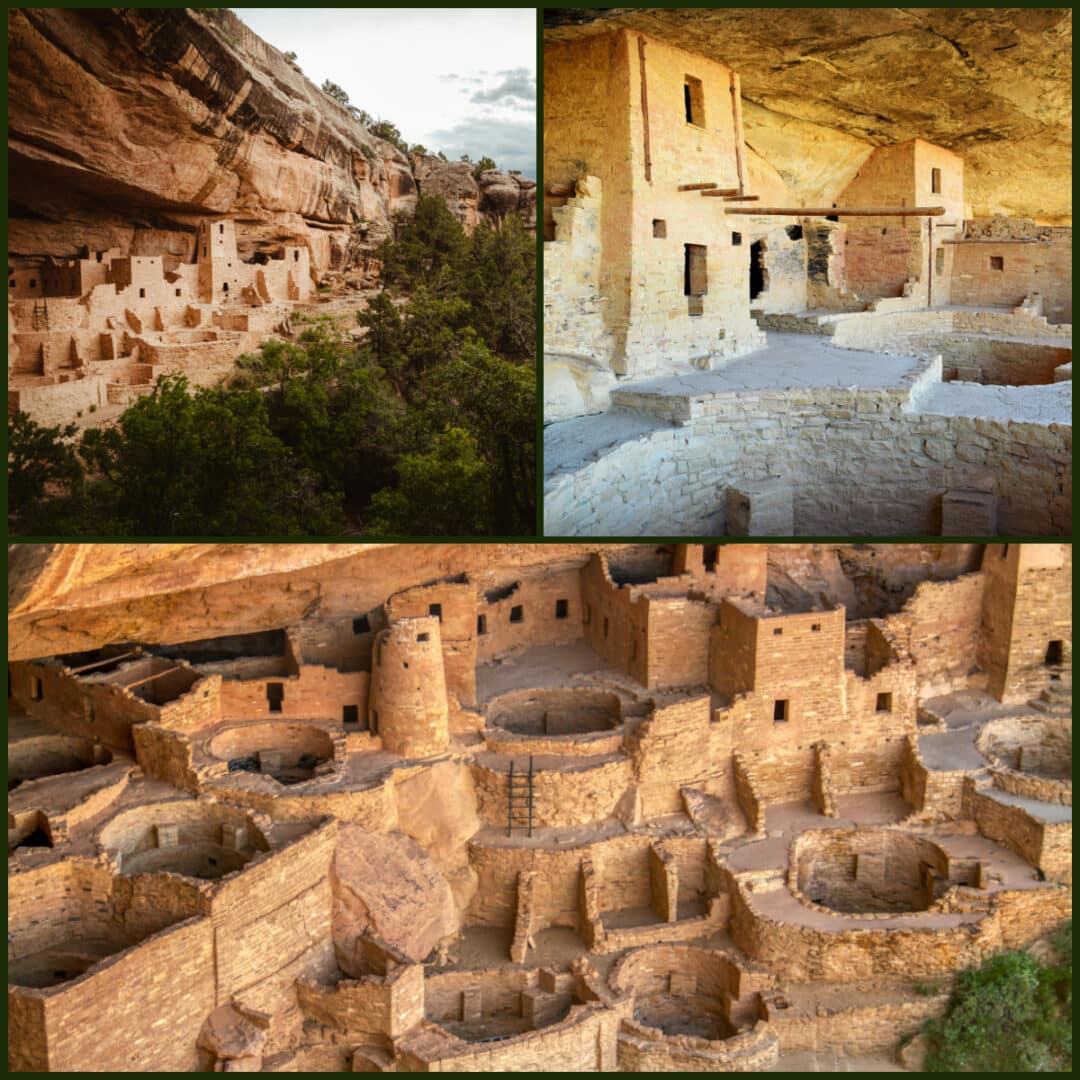
After taking in the awe-inspiring cliff mesas, hop in your car and drive southwest through Navajo Nation to walk in the footsteps of dinosaurs. Although now a barren desert, the area around Tuba City, Arizona was once a wet swampland during the Jurassic period, when dinosaurs roamed the land. Take some time to view the Moenave Dinosaur Tracks (US-160, Tuba City) and reflect on the passage of time.
Continue your journey through time, albeit a bit more recent, as you travel through Flagstaff and explore some iconic Americana destinations along historic Route 66. While the original highway may have been decommissioned, many key portions remain intact that you can visit on your journey through Arizona. Check out the Twin Arrows Trading Post ruins or snap a photo at the ionic Western Hills Motel Neon Sign (1580 E Route 66). Seeing the remains of these kitschy roadside attractions will make you reflect on the unique, offbeat charm that once defined the American highway experience. If you’re in need of refreshment, make sure to visit Sultana Bar (301 W Historic Route 66, Williams). This iconic establishment has been quenching patrons’ thirst for over a century. Since its opening in 1912, predating the commissioning of Route 66 by over a decade, the bar has stood as a testament to history. During the prohibition era, it transformed into a speakeasy, adding another layer to its rich authenticity.
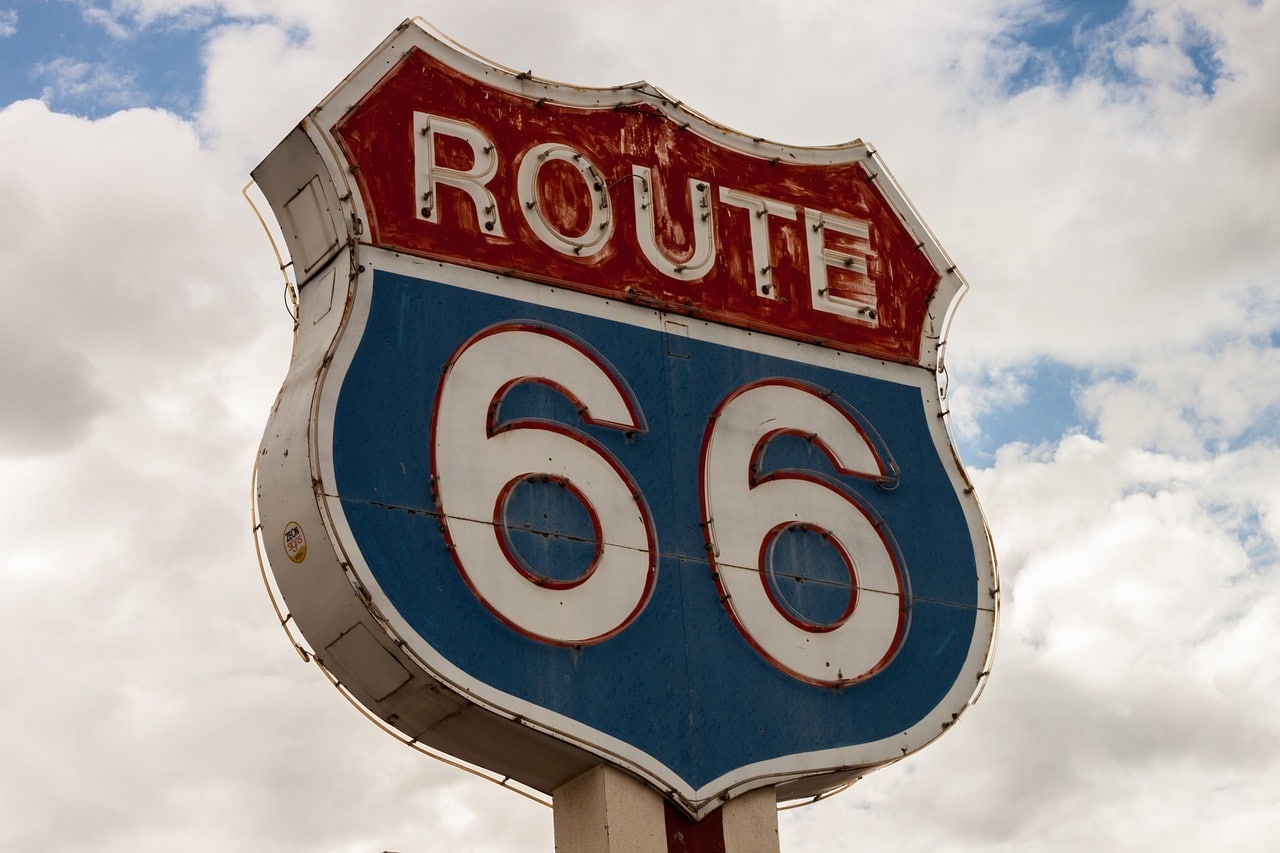
The next leg of your trip takes you through Arizona’s desert ghost towns, where the haunting ambiance of abandoned buildings, forgotten gravesites and whispers of the past invite moments of deep introspection along the road. In the town of Chloride, originally founded as a silver mining town in 1862, you can explore deserted old west buildings interspersed with junk art and rock murals. Next up, visit Swansea (51035 Swansea Road, Parker) one of the best-preserved ghost towns in Arizona. With dozens of adobe structures dating back to the 1860s, an old railroad depot, two cemeteries and several mine shafts, the town is under federal protection which has helped it remain frozen in time. Finally, right before you leave Arizona, take some time to walk through Ehrenberg Pioneer Cemetery (50238 Ehrenberg-Parker Highway), the burial ground of a long-vanished town that remains as a testament to the pioneers who once carved out a living in this harsh desert landscape.
California
In California, there is no shortage of natural beauty to marvel at as you travel across the state. For this guide, we’ve taken a different approach, instead highlighting some interesting museums, historical homes, and cultural sites we think you will enjoy while taking in all the picturesque landscapes. As you travel to the first stop on our list, you’ll pass through the vast and majestic Joshua Tree National Park before you reach The Museum of Ancient Wonders (69028-B E Palm Canyon Drive, Cathedral City) which features replicated and genuine treasured artifacts from ancient civilizations.
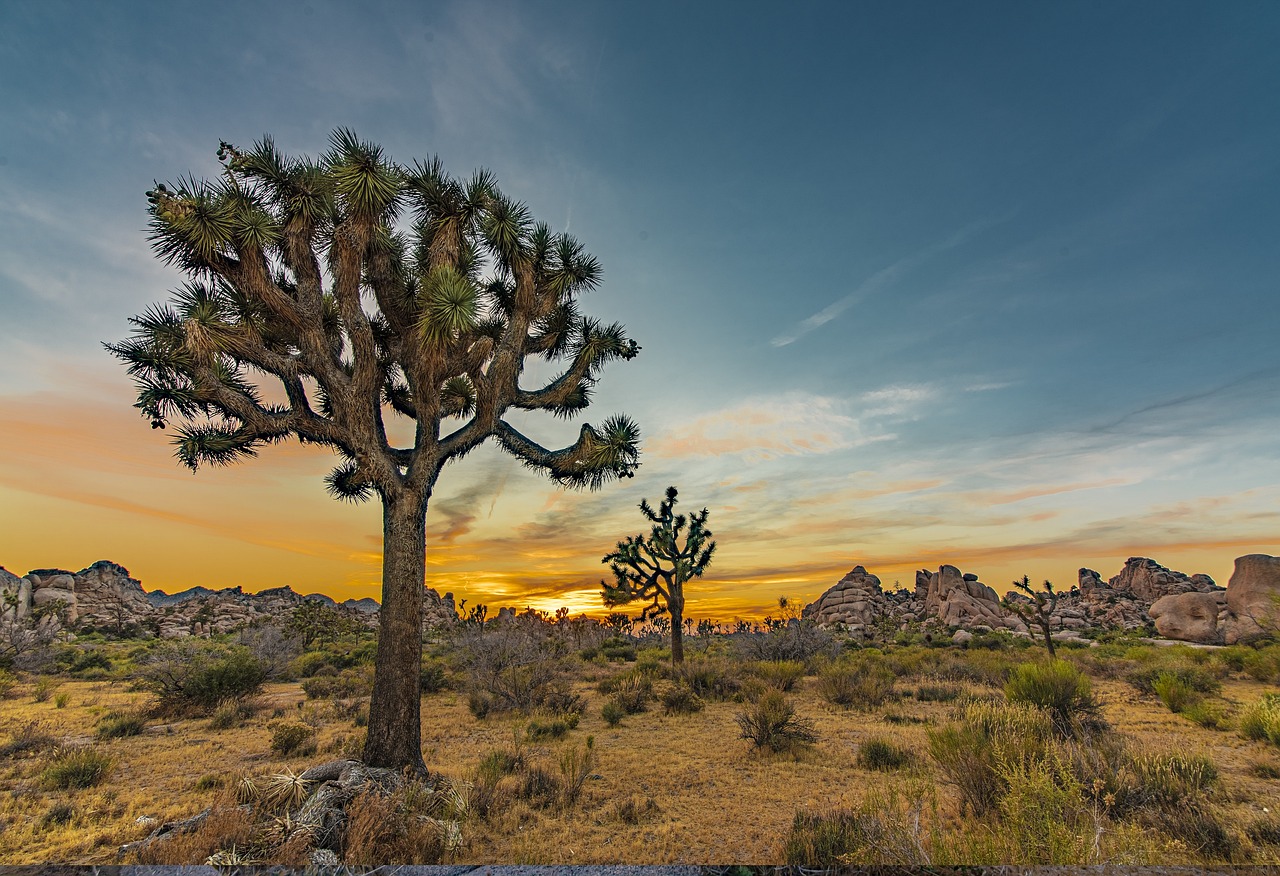
Next up, stop by the Edward-Dean Museum & Gardens (9401 Oak Glen Rd, Cherry Valley), a mecca for antique lovers. This historic home features a collection of over 2,000 items and is surrounded by 16 acres of stunning beauty designed by a renowned landscape architect.
Head west toward Los Angeles next to visit the delightfully dark Museum of Death (6363 Selma Ave) where you will feel right at home amongst the artifacts and exhibits related to death and dying. If you read Part 1 of our guide, you may recognize the name as this is the museum also has a location in New Orleans. While some of the displays may be overly gory, it’s worth checking out for the antique mortuary equipment alone. When you’re done exploring L.A., head north to visit the Meux Home Museum (1007 R St, Fresno) which from the outside resembles an old funeral home building. The 16-room Victorian mansion features many design elements that you can find in mortuary buildings from the same era.
Continue north to visit Columbia Cemetery (School House St, Columbia) on the outskirts of Yosemite National Park. This Gold Rush-era cemetery is full of history and offers guided tours that explore the lives and deaths of the people buried there. Then, head west San Jose to visit the Winchester Mystery House (525 S Winchester Blvd, San Jose). A lot has been written about this beautiful and bizarre 160-room labyrinth-style mansion built by Sarah Pardee Winchester between 1886 and 1922. However, the thing that has always fascinated us the most about the story is that the building of the house was really a grief passion project. Many historians believe Sarah became consumed with her building project to feel closer to her husband after his death, as architecture was one of William Winchester’s interests.
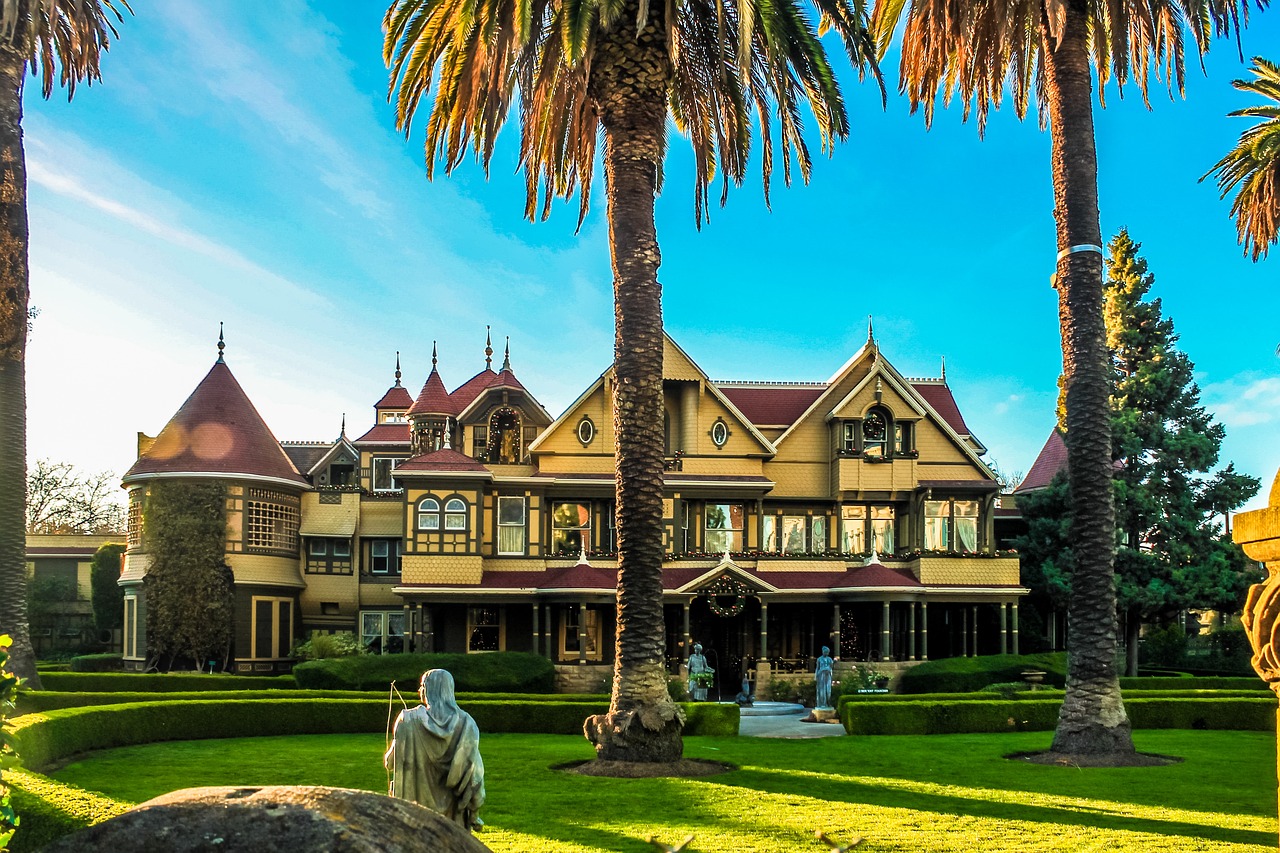
Just a short 8-minute drive from the Winchester Mystery House you’ll find the Rosicrucian Egyptian Museum (1660 Park Ave) which houses the largest collection of Egyptian artifacts in western North America. Exploring ancient Egyptian beliefs offers profound insights into different cultural perspectives on death. The museum includes a Tomb Tour that allows you to explore an underground rock-cut tomb and learn about the funerary practices of ancient Egyptians.
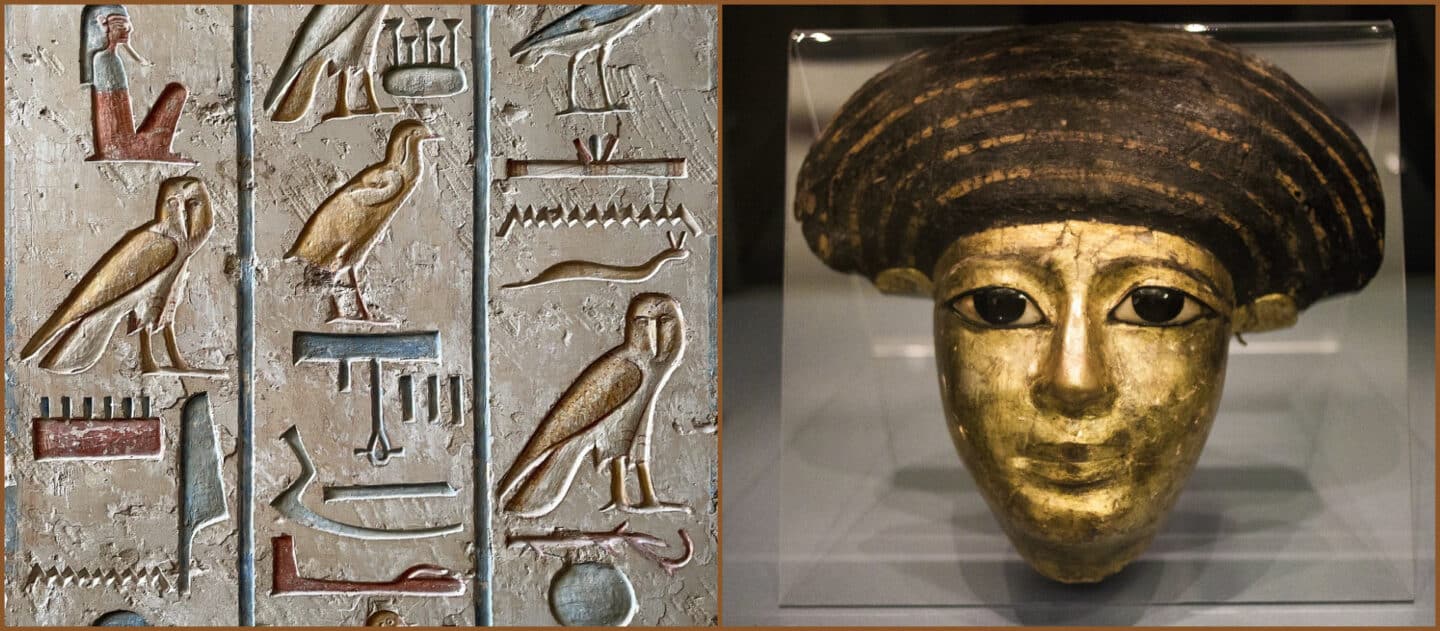
After leaving the museum, head north to visit the remarkable Chapel of the Chimes (4499 Piedmont Ave, Oakland). This extraordinary columbarium featuring of fountains, walkways, indoor gardens, trees and natural light was designed by California’s first female licensed architect, Julia Morgan, to provide a tranquil final resting place for notable Oakland visionaries.
After exploring the serene grounds of Chapel of the Chimes, it is time to close out your road trip with a scenic drive up the North Coast. You’ll be passing through California’s beautiful wine country before you hit Humboldt county, the location of our final road trip destination, the Avenue of the Giants. Considered by many to be the most scenic drive among the redwoods, this 31-mile scenic drive is surrounded by towering trees that create a majestic canopy overhead. Be sure to stop and visit The Immortal Tree (28101 Avenue of the Giants), a 1,000 year-old redwood which has endured against all odds.
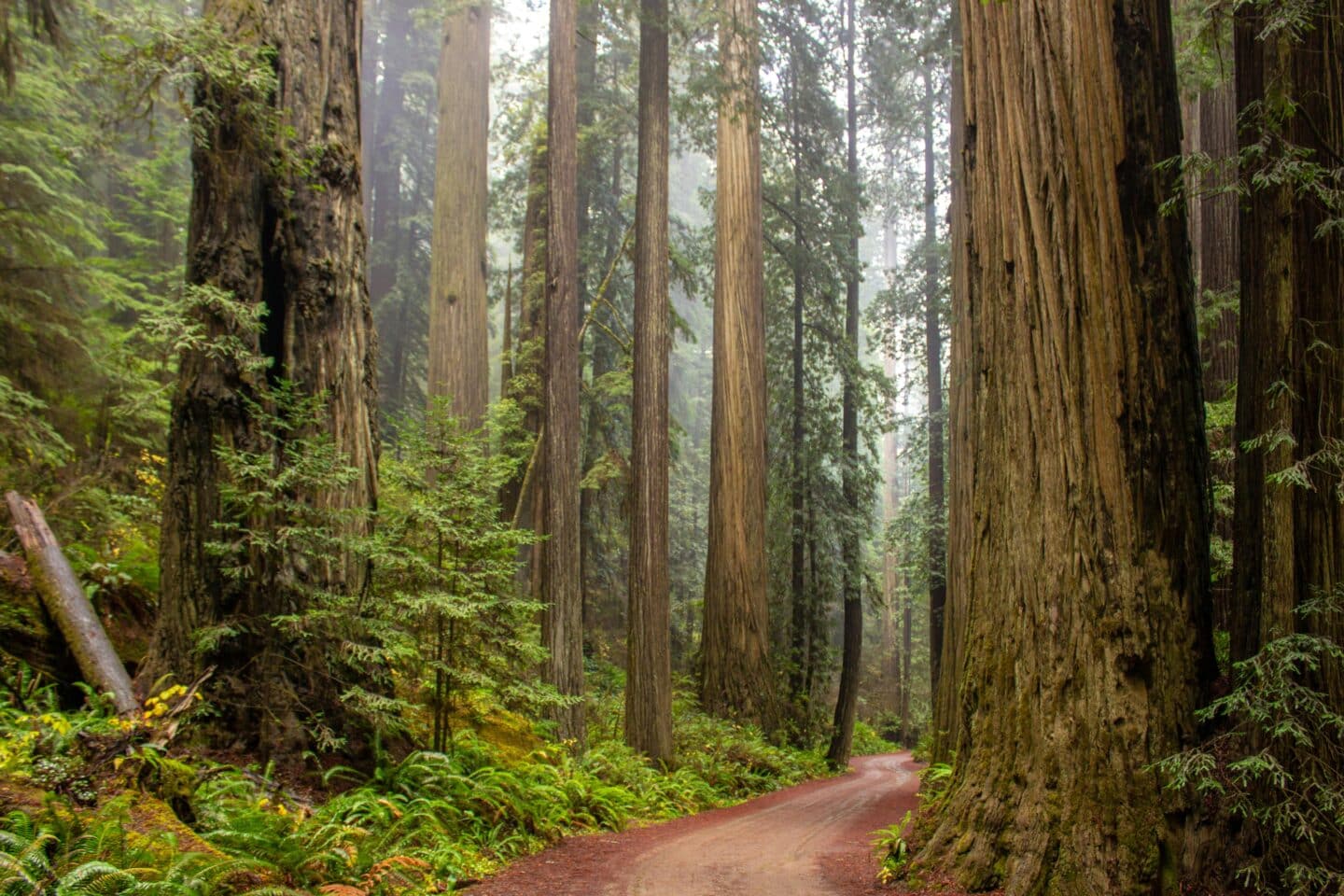
As you bid farewell to California’s verdant landscapes and towering giants, we hope you will carry with you not only the memories of this unforgettable road trip but also a renewed appreciation for the beauty that surrounds us, both in life and in death.
This completes Part 2 of our itinerary traveling from the southwest to the Pacific northwest. Click here to read Part 1. Be sure to check out our blog in the coming months to read conclusion of our road trip for funeral directors series which will explore some recommended sites to visit between the west coast and mid-west. Happy travels everyone!
RELATED READING
11 Remarkable Graves with Incredible Back Stories
28 Mind-Blowing Atlas Obscura Stories Funeral Directors Will Love
7 Out of the Ordinary Gifts Left On Famous Gravesites
ASD is here to help when you need to get away
When you need to take a well-deserved vacation or simply step away from the office, ASD is here to ensure seamless communication for your funeral home. Our dedicated team covers your phones with empathy and professionalism, allowing you the freedom to embark on adventures while staying connected through our convenient mobile app. Rest assured, you can check in anytime, knowing that your funeral home communications are in capable hands.
